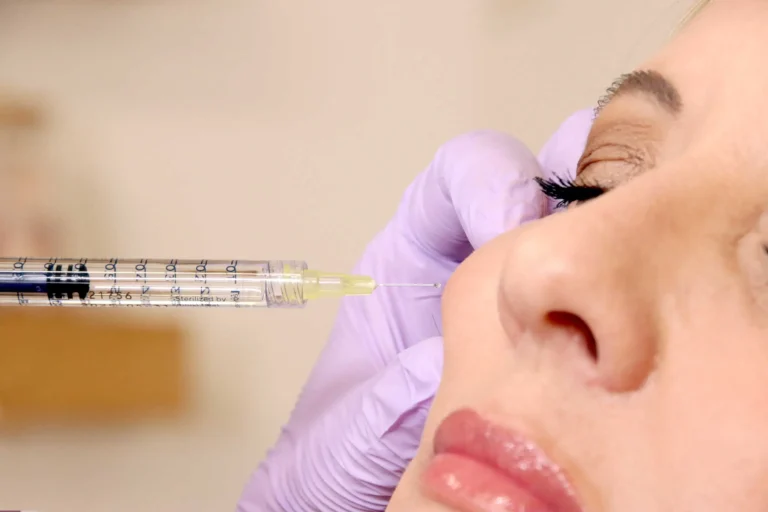In recent years, the cosmetic industry has undergone a quiet but radical transformation, thanks to the integration of advanced technologies. Lip augmentation, once considered a straightforward procedure, has now evolved into a high-precision art form. From the tools used during injection to the data analytics guiding treatment plans, technology is revolutionizing how practitioners approach lip enhancement. Whether clients search for lip fillers near me or explore cutting-edge clinics across the globe, the trend is unmistakable—precision aesthetics is redefining beauty norms and elevating the entire lip filler experience.
The Rise of Smart Injectables
At the heart of the tech-driven transformation in aesthetics are smart injectables. These aren’t just syringes with a sterile needle anymore. Advanced systems now use sensors, real-time data tracking, and AI to assist practitioners in achieving optimal outcomes. These devices measure the depth and angle of injection, the resistance of skin tissue, and even the viscosity of the filler in real time. The benefit? Improved safety, consistency, and results that are more predictable.
With these tools, practitioners no longer rely solely on visual estimates or touch. Instead, they are guided by calibrated, data-rich systems that ensure precise filler placement. This drastically reduces the risk of asymmetry, overfilling, or bruising—issues that were once common even in expert hands.
3D Imaging and Facial Mapping: A New Era of Planning
Gone are the days when lip augmentation was based purely on consultation and imagination. Clinics are now adopting advanced 3D imaging technology and AI-powered facial mapping software to create highly personalized treatment plans. These systems allow both the provider and the client to visualize the expected outcome before a single drop of filler is used.
The software analyzes bone structure, lip symmetry, facial proportions, and even micro-expressions to recommend enhancements that will harmonize with the client’s natural features. This not only builds trust but also leads to more refined and natural-looking results. Moreover, with the ability to digitally simulate multiple versions of the final result, clients can make informed choices, reducing post-procedure dissatisfaction.
AI-Driven Personalization and Predictive Analytics
Artificial Intelligence is not just about facial mapping—it’s about data. AI engines now compile thousands of case studies, procedural outcomes, and facial morphologies to develop predictive models for each client. This allows practitioners to recommend tailored filler types, volumes, and techniques based on the most successful outcomes for similar profiles.
This kind of personalization goes far beyond aesthetics. AI-driven systems can also assess potential risks, allergies, and long-term compatibility with different filler types. The result is a more holistic and scientifically grounded approach to beauty—one that prioritizes both appearance and overall well-being.
Virtual Consultations and Augmented Reality Tools
Technology has also made the process of getting lip fillers more accessible and convenient. Virtual consultations powered by augmented reality (AR) enable clients to try on their “new lips” from the comfort of their homes. These apps use facial recognition and AR overlays to simulate how lips will look post-treatment. While not a substitute for medical advice, they provide a realistic preview that can help set expectations and spark meaningful conversations during in-person consultations.
Additionally, the digital consultation experience allows practitioners to reach a broader audience. Especially in the post-pandemic world, tele-aesthetics has become a vital service. Clients can upload photos or attend live video sessions to receive professional guidance, making aesthetic care more democratic and far-reaching than ever before.
Advanced Fillers and Longer-Lasting Results
The materials themselves have also improved, thanks to biotechnological advancements. Today’s fillers are designed for greater biocompatibility and longevity. Hyaluronic acid-based fillers have been fine-tuned for specific functions—some target hydration and volume, while others are engineered for subtle contouring or structural support. Nanotechnology is also being explored to develop fillers that integrate more seamlessly into tissue and degrade at a slower, more controlled rate.
These newer formulations respond more naturally to facial movements, reducing the risk of lumpiness or artificial appearance. They also contain anesthetics, anti-inflammatory compounds, or even regenerative peptides that aid in healing and tissue repair, making the overall experience more comfortable and effective.
The Future of Lip Fillers: Where Innovation Is Headed
As innovation accelerates, the next generation of lip fillers may involve regenerative aesthetics—using stem cells or growth factors to stimulate the body’s own collagen production. Research into gene expression and molecular behavior in the skin promises even more advanced treatments that could make traditional fillers obsolete.
We’re also likely to see integration with wearable technology and health-monitoring systems. Imagine a smart patch that tracks filler behavior beneath the skin or alerts the user to potential inflammation or migration in real time. These breakthroughs could redefine safety standards and open up a whole new era of precision care.
Another exciting frontier is the rise of robotic assistance in aesthetic medicine. While fully automated injectors are still a concept, robotic arms guided by AI and human operators could offer even more precision than what’s possible manually, particularly in complex or delicate procedures.
Conclusion
The beauty landscape is undergoing a revolution, and lip fillers are at the forefront of this technological renaissance. From 3D facial mapping to AI-guided personalization, the marriage between aesthetics and technology is enabling safer, smarter, and more satisfying outcomes. For clients seeking enhancements, the experience is no longer about simply making lips bigger—it’s about harmonizing with their unique features through the lens of data and design.
As we look ahead, one thing is clear: the future of beauty isn’t just skin deep. It's data-driven, precision-engineered, and deeply personal. The age of guesswork is over, and a new standard of aesthetic excellence has arrived.

Comments on “Precision Aesthetics: How Technology Is Transforming Lip Fillers”